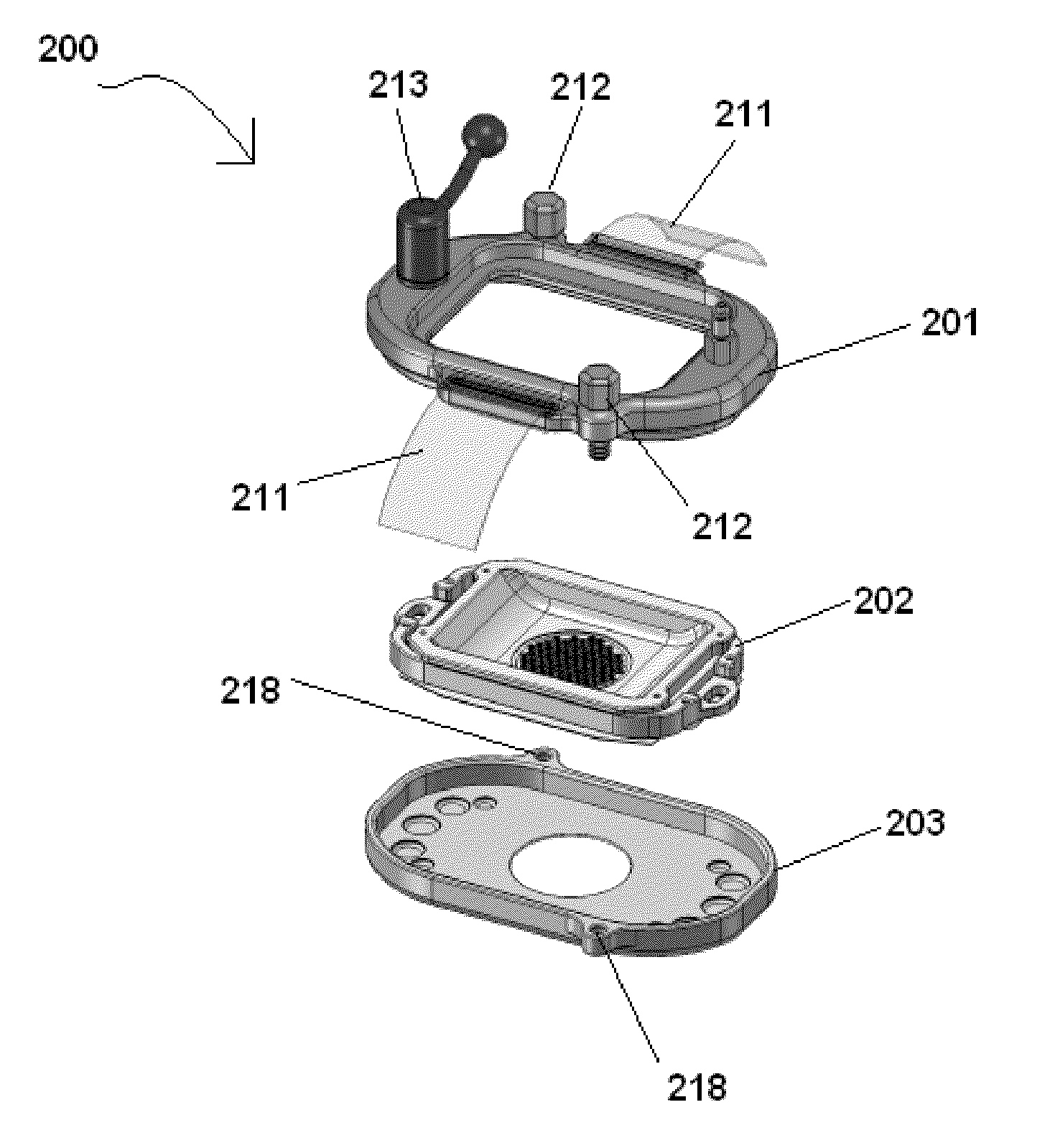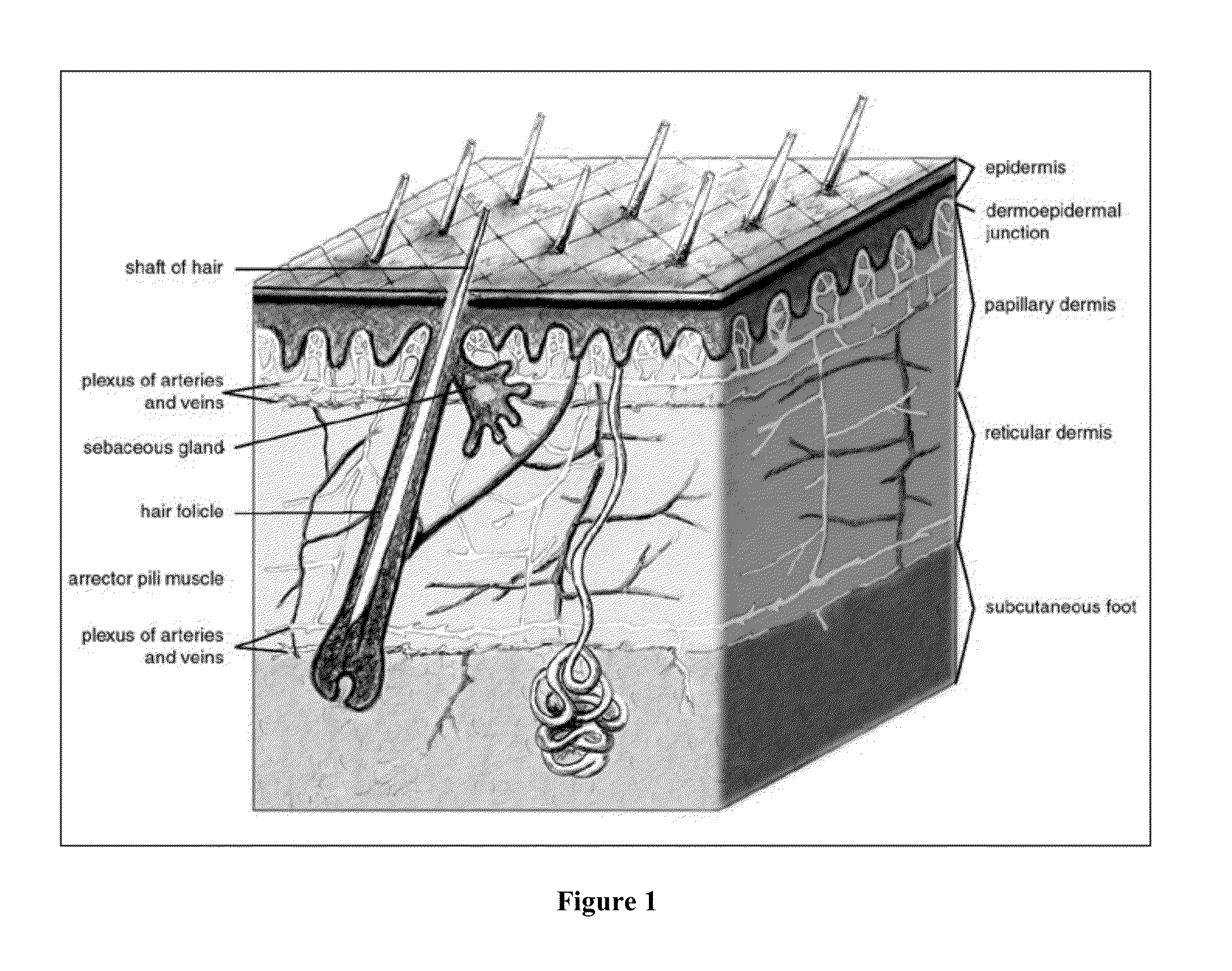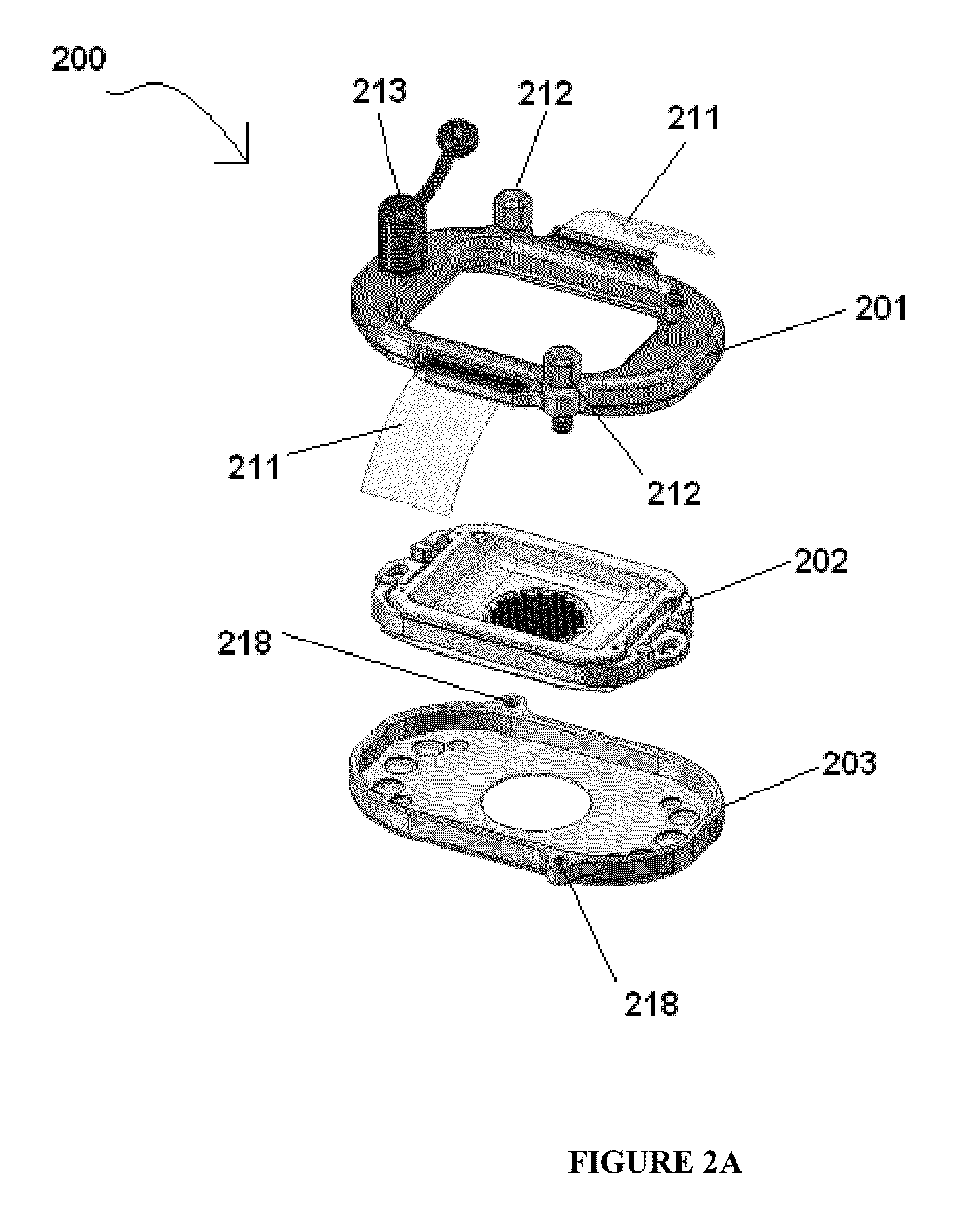Methods of manufacturing devices for generating skin grafts
a manufacturing device and skin grafting technology, applied in the direction of manufacturing tools, machines/engines, mechanical equipment, etc., can solve the problems of skin tissue being subject to many forms of damage, skin grafting involves certain risks, trauma and wound generation at the donor site,
- Summary
- Abstract
- Description
- Claims
- Application Information
AI Technical Summary
Benefits of technology
Problems solved by technology
Method used
Image
Examples
Embodiment Construction
[0037]The skin consists of 2 layers. The outer layer, or epidermis, is derived from ectoderm, and the thicker inner layer, or dermis, is derived from mesoderm. The epidermis constitutes about 5% of the skin, and the remaining 95% is dermis. FIG. 1 provides a diagram showing the anatomy of skin. The skin varies in thickness depending on anatomic location, gender, and age of the individual. The epidermis, the more external of the two layers, is a stratified squamous epithelium consisting primarily of melanocytes and keratinocytes in progressive stages of differentiation from deeper to more superficial layers. The epidermis has no blood vessels; thus, it must receive nutrients by diffusion from the underlying dermis through the basement membrane, which separates the two layers.
[0038]Recently, research has shown that pluripotent stem cells are also located in the epidermal layer (Balaji et al., Biology and Medicine, 2(2): 57-67 (2010)). Epidermal grafting has been demonstrated in the li...
PUM
| Property | Measurement | Unit |
|---|---|---|
| diameter | aaaaa | aaaaa |
| diameter | aaaaa | aaaaa |
| diameter | aaaaa | aaaaa |
Abstract
Description
Claims
Application Information
 Login to View More
Login to View More - R&D
- Intellectual Property
- Life Sciences
- Materials
- Tech Scout
- Unparalleled Data Quality
- Higher Quality Content
- 60% Fewer Hallucinations
Browse by: Latest US Patents, China's latest patents, Technical Efficacy Thesaurus, Application Domain, Technology Topic, Popular Technical Reports.
© 2025 PatSnap. All rights reserved.Legal|Privacy policy|Modern Slavery Act Transparency Statement|Sitemap|About US| Contact US: help@patsnap.com



